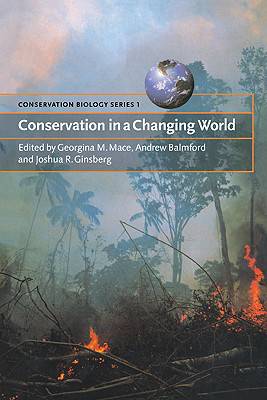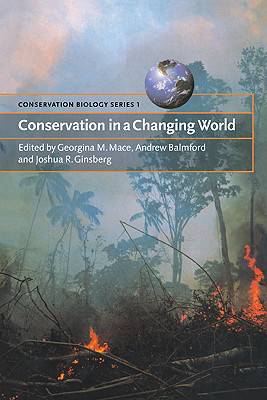
- Afhalen na 1 uur in een winkel met voorraad
- Gratis thuislevering in België vanaf € 30
- Ruim aanbod met 7 miljoen producten
- Afhalen na 1 uur in een winkel met voorraad
- Gratis thuislevering in België vanaf € 30
- Ruim aanbod met 7 miljoen producten
Zoeken
Conservation in a Changing World
Georgina M. (Zoological Society of London) Mace, Andrew (University of Cambridge) Balmford, Joshua R. (Wildlife Conservation Society, New York) Ginsberg
€ 92,45
+ 184 punten
Omschrijving
As evidence for the rapid loss of biological diversity strengthens, there is widespread recognition of the need to identify priorities and techniques for conservation action that will reverse the trend. Much progress has been made in the development of quantitative methods for identifying priority areas based on what we know about species distributions, but we must now build an understanding of biological processes into conservation planning. Here, using studies at global to local scales, researchers consider how conservation planners can deal with the dynamic processes of species and their interactions with their environment in a changing world, where human impacts will continue to affect the environment in unprecedented ways. This book will be a source of inspiration for postgraduates, researchers and professionals in conservation biology, wildlife management and ecology.
Specificaties
Betrokkenen
- Auteur(s):
- Uitgeverij:
Inhoud
- Aantal bladzijden:
- 328
- Taal:
- Engels
- Reeks:
- Reeksnummer:
- nr. 1
Eigenschappen
- Productcode (EAN):
- 9780521634458
- Verschijningsdatum:
- 28/05/1999
- Uitvoering:
- Paperback
- Formaat:
- Trade paperback (VS)
- Afmetingen:
- 153 mm x 228 mm
- Gewicht:
- 526 g

Alleen bij Standaard Boekhandel
+ 184 punten op je klantenkaart van Standaard Boekhandel
Beoordelingen
We publiceren alleen reviews die voldoen aan de voorwaarden voor reviews. Bekijk onze voorwaarden voor reviews.











